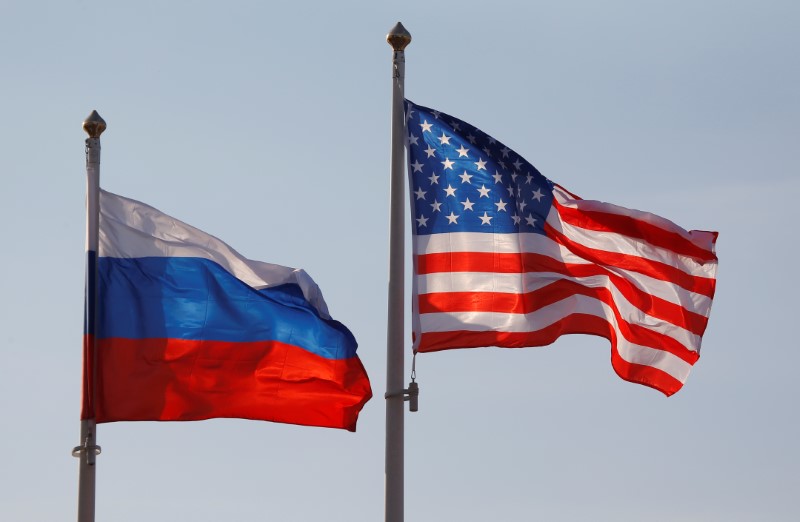Space, nuclear security, polar bears: Russia and the U.S. still have some shared concerns

MOSCOW – Russia and the United States are so at odds right now – trading insults, sanctions and retaliatory moves on a regular basis – it might appear that the two nuclear superpowers have stopped cooperating altogether.
That is not the case. Although both sides agree that relations are at a post Cold-War low, several U.S.-Russian ventures continue, ranging from the pedestrian to the cosmic to a cluster of pacts and projects that could determine humanity’s survival.
President Donald Trump famously dismissed the New START Treaty when he was still a candidate, but as the two countries most equipped to end life on the planet, Russia and the United States take very seriously the 2011 agreement that limits the size of their strategic nuclear arsenals to 1,550 each by 2018. The two sides continue to exchange data to ensure that each sticks to the target. That’s a good thing and not to be taken for granted: Moscow and Washington have recently accused each other of violating a 1987 treaty that limits intermediate nuclear missiles.
Trump has also lambasted the deal to shut down most of Iran’s nuclear program, yet his administration and the Kremlin continue to jointly support it. And another nonproliferation milestone will be reached next week, when Russian and U.S. officials celebrate the opening in Kazakhstan of the world’s first “bank” for low-enriched uranium. The project will allow countries to acquire uranium for nuclear power without having to build facilities that could also be used to make nuclear weapons.
“Everyone agrees that we need to keep control over the confrontational relationship,” said Dmitry Suslov, a program director for the Moscow-based Valdai Discussion Club think tank. “Keeping control means avoiding a direct U.S.-Russia military clash, and that means avoiding a complete collapse of arrangements on arms control.”
Then there’s Syria. The alliance with Russia against the Islamic State that candidate Trump promised has not materialized, and the two sides had run-ins after the U.S. coalition targeted the forces of Moscow’s ally, Syrian President Bashar Assad, in April and June. But after Trump and Russian President Vladimir Putin reached a deconfliction agreement for a border region in southern Syria last month, the U.S. and Russian military chiefs of staff have been in touch on how to implement it.
That isn’t to say that such cooperation is likely to reverse the negative trend of U.S.-Russian relations. In fact, some analysts warn against reading too much into it.
“Such collaboration – this is important – will not create a momentum toward overall relaxation of tensions, which I see as running high for the foreseeable future,” said Dmitri V. Trenin, director of the Carnegie Moscow Center.
The source of much of the antagonism is Russia’s involvement in Ukraine: U.S. sanctions were originally imposed on Moscow because of the Kremlin’s annexation of Crimea and its support for separatists in eastern Ukraine, although they later were broadened to include election meddling and Syria.
After the Trump-Putin meeting, a mini-breakthrough was announced in this area, as well, with the appointment of Kurt Volker as the new U.S. special envoy for efforts to end the fighting in eastern Ukraine. Volker met with Putin’s aide Vladislav Surkov in Minsk, Belarus, this week, and Russian news agencies quoted Surkov as calling the talks “useful and constructive.”
“The very fact of such communication is better than nothing,” said Ivan Timofeev, a program director for the Russian International Affairs Council, a think tank. But because of the vast differences between the U.S. and Russian positions, he said, “Ukraine will be toxic for U.S.-Russia relations.”
Timofeev and other analysts held out more hope for “Track 2 dialogue” – unofficial diplomacy that takes place when diplomats can’t agree. One such initiative, the U.S.-Russian Elbe Group, named for the river where U.S. and Soviet forces met up in Germany in the waning days of World War II, has brought together senior retired military and intelligence officers from both sides since 2010, according to Simon Saradzhyan, director of the Russia Matters Project at Harvard’s Belfer Center for Science and International Affairs.
Speaking of bygone conflicts, the United States and Russia continue to cooperate on locating prisoners of war and those missing in action from World War II through the Cold War.
And speaking of cold, Russian and American scientists have been working together since 2001 to protect polar bears.
Even during the Cold War, Russian-American cultural exchanges flourished: Who could forget Van Cliburn winning hearts at a piano competition in Moscow in 1958? That tradition also continues. Just this week, a U.S. jazz trio was in Moscow to jam with Tuvan throat singers.
Farther afield, American astronauts have been relying on Russia to fly them to the International Space Station, since the U.S. space shuttle program shut down in 2011.
Despite muttering in Moscow about cosmic retaliation for the latest U.S. sanctions, the Kremlin is not expected to follow through.
Not when it costs NASA $80 million for a seat on a Soyuz rocket.